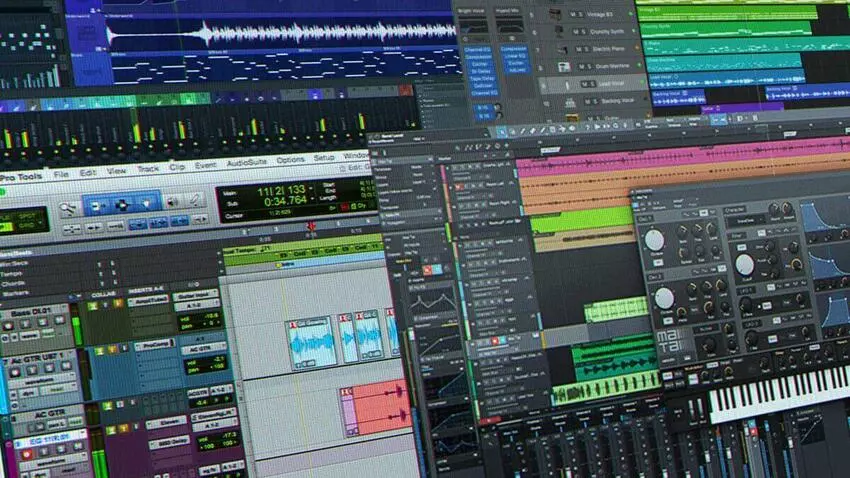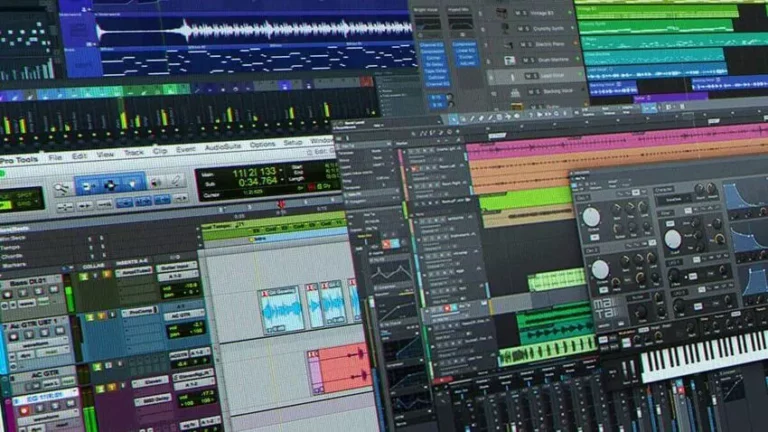In the Part One of this series we looked at the steps involved in exporting your tracks from your DAW in preparation for Mixing. In Part Two of this series we looked and when to process your tracks while exporting. Today we will look at the things to consider when exporting your MIDI tracks, export as MIDI or export as Audio?
Exporting MIDI Tracks and Audio from Virtual Instruments
In addition to exporting audio tracks, exporting MIDI information and audio tracks printed with virtual instrument (VSTi) data is a critical consideration, especially when working with virtual instruments in your music production. Here’s when and why you might want to consider these options:
Exporting MIDI Information:
When to Export MIDI:
- Collaboration: If you’re collaborating with a producer or mix engineer who prefers to use their own virtual instruments, exporting MIDI tracks can be a wise choice. This allows them to replace the virtual instruments with their preferred sounds and gives them control over sound design.
-
Revisions and Flexibility: Exporting MIDI information provides the mix engineer or producer with the flexibility to modify instrument choices, edit note data, or adjust MIDI performance parameters. This can be especially useful during the mixing and arrangement phases.
Why Export MIDI:
- Non-Destructive: Exporting MIDI is non-destructive and retains the original performance data, preserving your creative intentions.
-
Preservation of MIDI Effects: If you’ve applied MIDI effects or automation to your virtual instruments, exporting MIDI ensures that these creative elements are retained.
Exporting MIDI Tracks as Audio with VSTi:
When to Export MIDI Tracks as Audio with VSTi:
- Stem Creation: When creating stems for mixing, you may want to export MIDI tracks as audio with the virtual instrument (VSTi) sound. This simplifies the mixing process and ensures that the mix engineer works with audio files for resource efficiency.
-
Sound Freeze: If you have a complex virtual instrument setup, exporting MIDI tracks as audio with VSTi allows you to “freeze” the sound, essentially converting the virtual instrument into audio. This can help reduce CPU load and increase stability, particularly when dealing with resource-intensive virtual instruments.
Why Export MIDI Tracks as Audio with VSTi:
- Sound Consistency: When exporting MIDI tracks as audio with the virtual instrument sound, you ensure that the mix engineer hears the exact sound you intended, including any specific settings, articulations, or instrument presets applied in the VSTi.
-
Resource Management: Converting VSTi tracks to audio alleviates CPU and memory usage, contributing to a smoother mixing process, especially in projects with a high virtual instrument load.
-
Collaboration: Exporting MIDI tracks as audio with VSTi can be a practical choice if you’re collaborating with someone who doesn’t have access to the same virtual instruments you used. It provides them with the accurate sound, ready for mixing.
The decision to export MIDI tracks or convert them to audio with VSTi depends on your specific needs, workflow, and collaboration requirements. Exporting MIDI provides flexibility and allows the mix engineer or producer to make creative adjustments, while exporting MIDI tracks as audio with VSTi ensures sound consistency, resource management, and convenience in the mixing process. Clear communication with your mix engineer or collaborator is vital to determine the best approach that aligns with your musical vision.
Exporting Drums from VSTi Instruments
When dealing with MIDI drum tracks in your music production, exporting drums from virtual instrument (VSTi) plugins can introduce unique considerations. Drums often involve multiple layers, each produced by individual virtual instruments or sound libraries. Here’s when and why you might consider exporting drums from VSTi instruments:
When to Export Drums from VSTi:
- Sound Control: Exporting drums as audio allows for precise control over the individual drum elements. This is particularly beneficial when you want to apply specific processing or effects to each drum sound during mixing.
-
Parallel Processing: To achieve parallel processing on individual drum tracks, you can export each drum element separately. This enables you to apply unique effects, EQ, or compression to, for example, the kick, snare, or cymbals, enhancing the overall drum sound.
-
Sample Layering: If you’ve layered drum samples or are using multiple virtual instruments to create a single drum sound (common in modern drum production), exporting each drum element provides better control and the ability to fine-tune the layering during mixing.
Why Export Drums from VSTi:
- Sound Consistency: Exporting drums as audio ensures that the mix engineer hears the exact drum sounds you intended, including any specific processing, effects, or layering that you’ve applied in the VSTi.
-
Resource Management: Drum VSTi plugins can be resource-intensive, especially in projects with a significant number of drum tracks. Exporting drums as audio helps reduce CPU and memory load, contributing to project stability.
-
Ease of Mixing: With individual drum tracks as audio, the mix engineer has the freedom to balance the drum elements, apply tailored processing, and achieve a polished drum mix efficiently.
-
Enhanced Creativity: By providing the mix engineer with individual drum tracks, you allow them to unleash their creativity in shaping the drum sound, resulting in a more dynamic and engaging mix.
-
Better Problem Solving: If there are any technical issues or inconsistencies in the drum sounds that need addressing during mixing, exporting drums as audio makes it easier to identify and solve these problems.
When dealing with MIDI drum tracks and VSTi instruments, exporting them as audio is normally a good practice that offers precise control, sound consistency, resource management, and flexibility during mixing. It empowers the mix engineer to fine-tune the drum elements, apply custom processing, and elevate the drum sound to its full potential, ultimately enhancing the overall quality of your music production.
However, in some situations, exporting the MIDI performance/notes instead may offer more flexibility in using other virtual drum libraries (VSTi). Having a discussion with your mix engineer about what is best for your drum tracks will ensure both the client and engineer’s expectations are met for the project.
When exporting MIDI tracks as MIDI or Audio, refer back to Part One for a discussion on the importance of exporting all tracks (Audio or MIDI) so they all start and end at the same time. This will ensure all tracks align when importing in to another DAW or session.
In Part Four of this series, we will look at things to consider when exporting your Guitar and Bass tracks.
Exporting Tracks for Mixing: A Complete Guide for Musicians and Producers – Part 3
- Part 1: Steps to Export your Tracks for Mixing
- Part 2: To Process or Not to Process while Exporting Tracks
- Part 3: When to Export MIDI directly or Audio while Exporting Tracks
- Part 4: Guitar and Bass – Amps, Direct Input (DI), and Amp Sims





